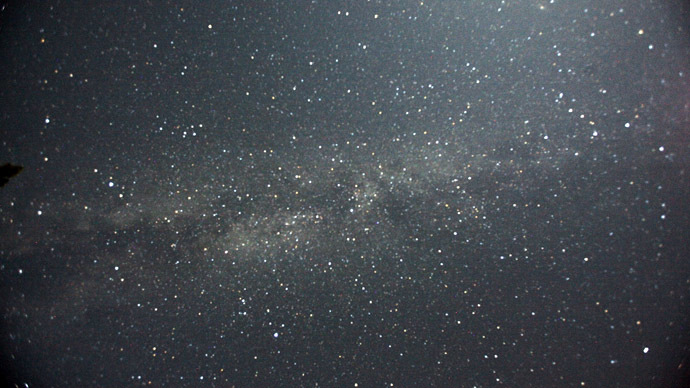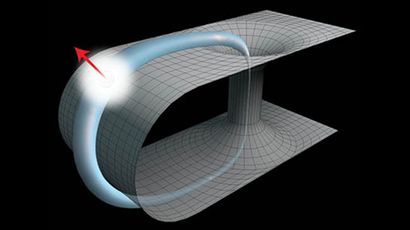Milky Way galaxy much lighter than previously thought, astronomers find

For the first time astronomers have been able to precisely measure the weight of our Milky Way galaxy, which has turned out much lighter than previously thought, according to new research.
In the study, published in current issue of the Monthly Notices
of the Royal Astronomical Society, astronomers demonstrate a new method of estimating the accurate
mass of galaxies.
The Milky Way is approximately half the weight of the neighboring
Andromeda galaxy, which has a similar spiral structure to our
own, the team of researchers led by the University of Edinburgh
has found.
Their calculations are based on the measurements of the galaxies’
mass of dark matter – the invisible matter which makes up most of
the outer regions of both galaxies. Previous studies were only
able to measure the mass enclosed within the inner regions.
The team also found that 90 percent of the mass of the Andromeda
and Milky Way galaxies is made up of dark matter. The scientists
also estimated that Andromeda contains twice as much dark matter
as the Milky Way.
“We always suspected that Andromeda is more massive than the
Milky Way, but weighing both galaxies simultaneously proved to be
extremely challenging,” said lead author Jorge Penarrubia,
from the University of Edinburgh.
“Our study combined recent measurements of the relative
motion between our galaxy and Andromeda with the largest
catalogue of nearby galaxies ever compiled to make this
possible,” said Penarrubia.

The two galaxies belong to the so-called Local Group – a term
used to describe the group of more than 54 galaxies with the
gravitational center located somewhere between Milky Way and
Andromeda, which are the two largest in the group.
While most galaxies, including those on the outskirts of the
Local Group, are moving farther apart due to expansion, the
galaxies in the Local Group are moving closer together because of
gravity.
The new method allowed researchers to combine the available
information about gravity and expansion to complete precise
calculations of the masses of both the Milky Way and Andromeda.
"By studying two massive galaxies that are close to each
other and the galaxies that surround them, we can take what we
know about gravity and pair that with what we know about
expansion to get an accurate account of the mass contained in
each galaxy,” said author Matthew Walker of Carnegie Mellon
University's McWilliams Center for Cosmology. “This is the
first time we've been able to measure these two things
simultaneously."
Previously, researchers were only able to estimate the mass of
the Milky Way and Andromeda based on observations made using
dwarf galaxies – much smaller galaxies than our own with only up
to several billion stars.
The study was carried out in collaboration with the University of
Edinburgh, the University of British Columbia, Carnegie Mellon
University and NRC Herzberg Institute of Astrophysics, and
supported by the UK's Science and Technology Facilities Council.














